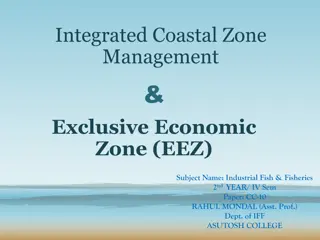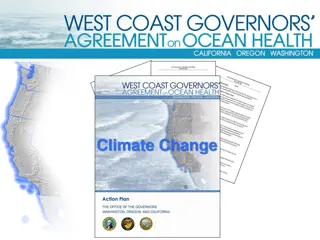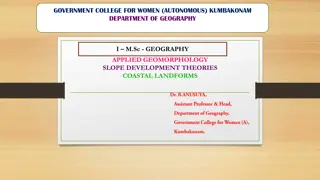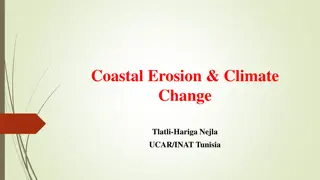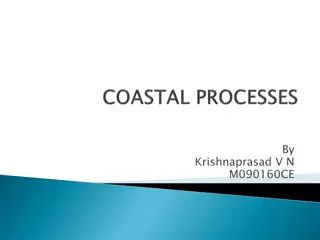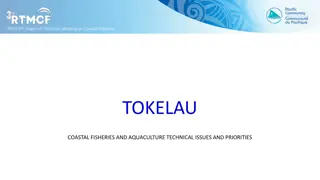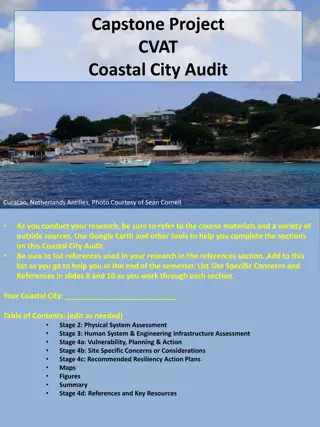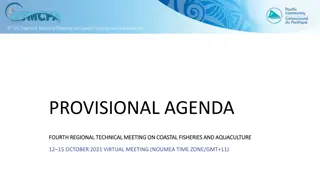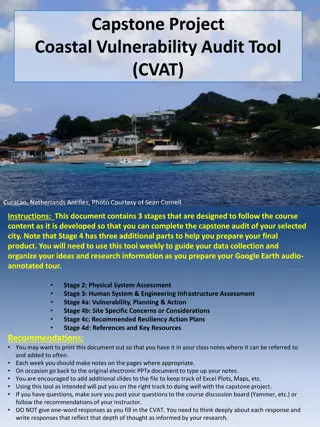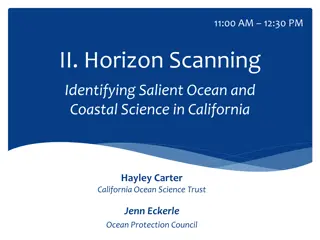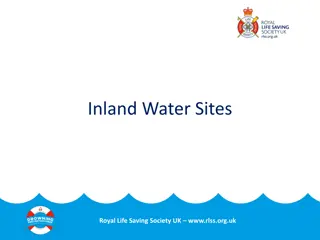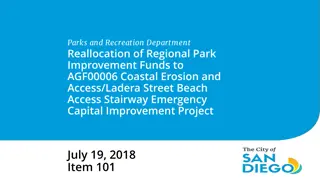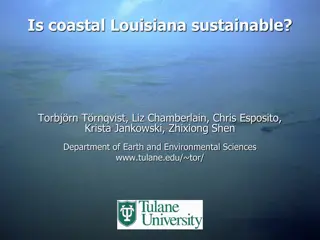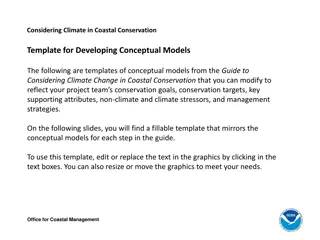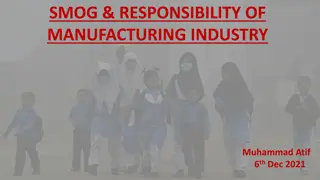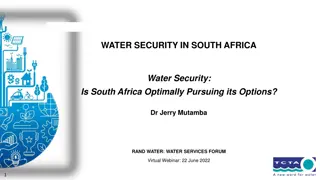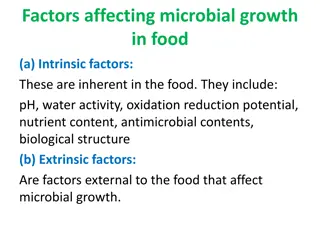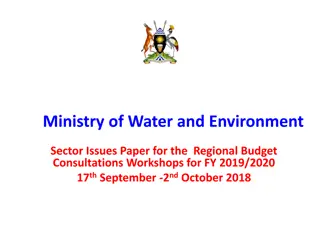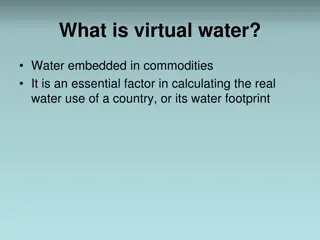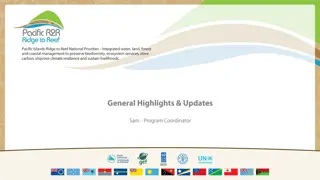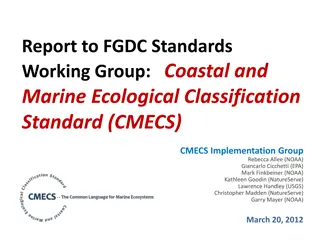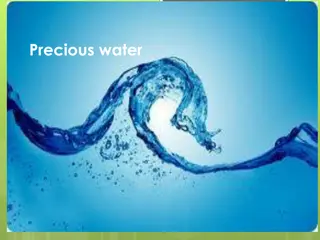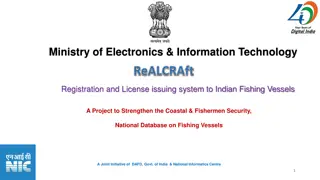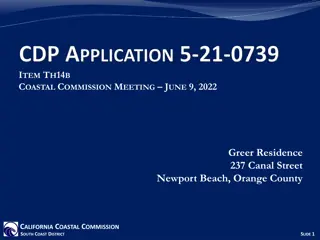Risks and Aggravation Factors affecting Water Resources in Coastal Areas
Water resources in coastal areas face various risks and aggravation factors due to climate change, affecting availability and quality. Intensification of agriculture, industry, and tourism activities, along with population movement and sea level rise, contribute to the challenges. Factors influencing coastal aquifers and the effects of climate change on water resources are significant concerns in managing water sustainability in these regions.
Download Presentation

Please find below an Image/Link to download the presentation.
The content on the website is provided AS IS for your information and personal use only. It may not be sold, licensed, or shared on other websites without obtaining consent from the author. Download presentation by click this link. If you encounter any issues during the download, it is possible that the publisher has removed the file from their server.
E N D
Presentation Transcript
Risks and aggravation factors affecting water resources in Coastal areas JamilaTarhouni Pr Hydraulic, Water Resources and Advanced Technologies
1. Introduction Introduction In Coastal area, Water resources are highly affected by climate change Direct related effects Indirect related effects Intensification of agriculture, Industry and tourism actvities: Reduction of available water resources: Quantity : decrease of recharge/ Increase of runoff outside the area -Accelerate the land degradation and then the runoff Quality: degradation of their quality (salinisation and all other forms of pollution) -Contaminate the water resources -Increase groundwater withdrawls Local induced effects Regional induced effects Regional Climatic Change effects -Population movement to the coastal area -Developemnt of the tourism activities Local climatic change effects: - sea level rise - Temperature increase - Rainfall decrease and storm events
Coastal areas: attractive zones because of their rich resources Two direct impacts: - High population growth and concentration along the coast - High water and food demands
Effects on water resources availability Reduction of surface water resources, directly related to rainfall change and basin land degradation Increased pressure on groundwater resources: the aquifers are directly and indirectly influenced by climatic change
Coastal areas: Factors influencing coastal aquifers and their effects Figure : Factors influencing coastal aquifers and their effects (FAO, 1997)
Coastal areas: Climate change effects 1. Sea Water level rise The Intergovernmental Panel on Climate Change (IPCC 2007) defined the vulnerability of a coastal aquifer system to salinization as the degree to which it is susceptible to and unable to cope with, the adverse effects of sea level rise or groundwater extraction
Diagram of an idealized coastal aquifer with a wedge of intruded seawater In the majority of cases, sea level rise is likely to lead to a loss of fresh groundwater due to a landward shift of the seawater wedge and a higher incidence of flooding
Coastal areas: Climate change effects 2. High water demand: increase of the fresh water pumping rate Increasd of seawater intrusion in a coastal aquifer with pumping: The well closest to the coastline causes upconing of the intruded seawater
Coastal areas: Climate change effects 3. Temperature increase effects Increase of Water Demand for irrigation High Evapotranspiration Increase of fresh water demand Storm events increase
Coastal areas: Climate change effects 4. Rainfall decrease effects Increase of Water Demand for irrigation Increase of climatic deficit Decrease of recharge rate
Coastal areas: Climate change effects 5. Land cover degradation Reduction of surface water storage Runoff increase Increase of groundwater pumping
Conclusion Several interdependant factors related to climatic change may affect the availability and the quality of water resources Factors related to CC at local scale or larger scale: Anthropogenic forcing factors Sea level rise Temperature increase Water resources shortage and degradation


